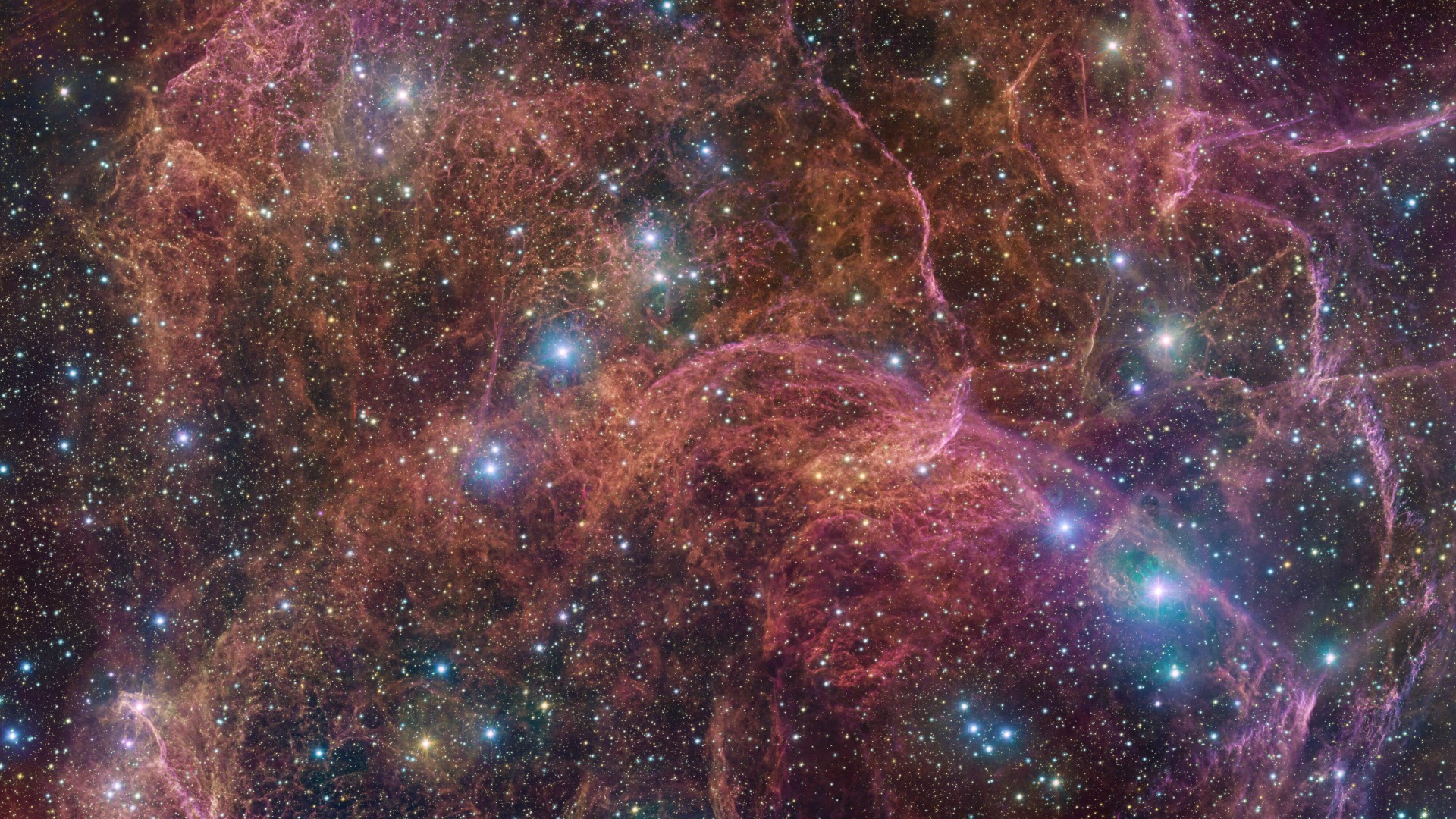Haunting photo of dead 'ghost star' a cosmic Halloween treat
The dead star's spectral nature definitely fits the mood of the season.

The European Space Observatory (ESO) has photographed a 'ghost' in deep space.
A supernova is one of the most spectacular events in the universe: the incredible explosion of a dying star that leaves behind an intricate and colorful nebula of gas and stellar matter in its wake. It's fitting, then, that the ESO just released an ethereal image of the Vela supernova remnant for Halloween.
This stellar ghost of sorts can look like many things to many different observers, but its spectral nature definitely fits the mood of the season. "Its spooky filamentary structure evoked different things to different members of our team, from intricate spider webs to ethereal specters," Juan Carlos Munoz-Mateos, an ESO spokesperson, told Space.com. "To me this ghostly appearance is very poetic, because we're literally seeing the remains of a long-gone star, so this metaphor works both visually and from an astrophysical point of view."
Related: Hubble spies a cosmic 'spider web' containing clues to dark secret
A supernova occurs when a sufficiently large star, roughly eight to 15 solar masses, runs out of the hydrogen and helium fuel required to stave off collapse. Drawn in by the intensity of its own gravity, and without the energy from nuclear fusion holding it up, the outer layers of the star very rapidly collapse in on the core. It is believed that the outer layers then smash into the core, compressing the electrons and protons of the heavy elements in the core into neutrons.
These outer layers then rebound off the newly formed ball of neutrons at its center, leaving behind a neutron star, an object that packs in the mass of a sun-like star into a volume roughly the size of a small city. The rebounding stellar material, meanwhile, heats up considerably in the process and gets ejected outward in the largest explosion known in the universe.
The neutron star left behind by the Vela supernova is just outside the top-left corner of the frame in the newly released photo, and it happens to be a pulsar that spins on its axis at a rate of more than 10 times per second, according to the ESO.
Breaking space news, the latest updates on rocket launches, skywatching events and more!
As for those rebounding outer layers, in the case of the Vela supernova remnant, this superheated material expanded into the surrounding cloud of interstellar gas, creating the web-like structure of bright filaments we see in the image.
The Vela supernova remnant is named after the constellation Vela (The Sails), located in the southern hemisphere, and was produced by a supernova estimated to have occurred around 11,000 years ago. Being just 800 light-years from Earth, human observers may have been able to see it in the sky at some point.
The supernova that produced the crab nebula was recorded by Chinese astronomers in 1054 CE and was said to be visible in the daytime sky for almost an entire month. That supernova was located roughly 6,500 light-years from Earth in the Perseus Arm of the Milky Way galaxy, or just over eight times farther away than the Vela supernova. Still, it is impossible to know for certain just how visible the Vela supernova was.
"As for its luminosity, it's hard to say because there's a wide variety of luminosities," Munoz-Mateos said. "It was probably fainter than Venus, but more prominent than SN 1987A and not as bright as SN 1006. Since this is well before the earliest forms of writing it's unlikely we have any sort of record, but it might have been noticed by people back then."
You can follow John on Twitter at @thisdotjohn. Follow us on Twitter @Spacedotcom or on Facebook.
John is a science and technology journalist and Space.com contributor. He received his B.A. in English and his M.A. in Computer Science from the City University of New York, Brooklyn College, and has bylines with TechRadar, Live Science, GamesRadar, and other publications. You can find him on Bluesky at @johnloeffler.bsky.social or seeking out dark sky country for spectacular views of the cosmos.

